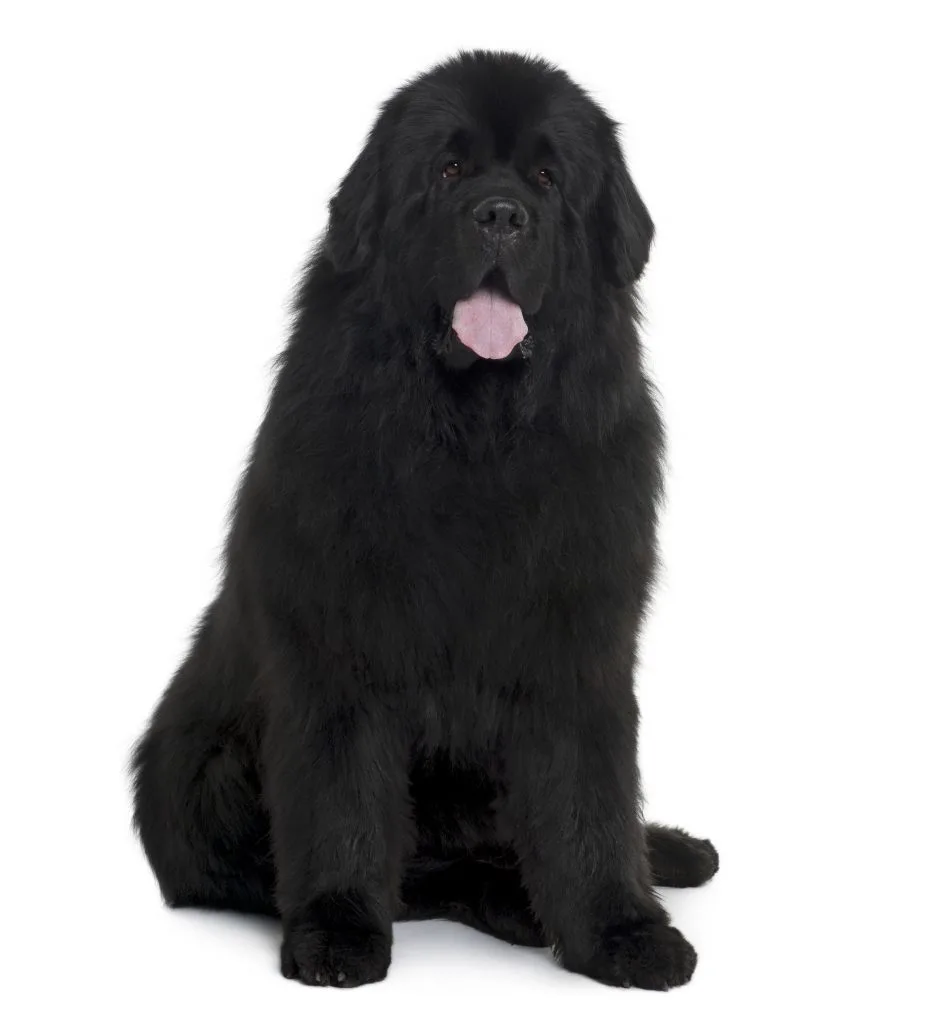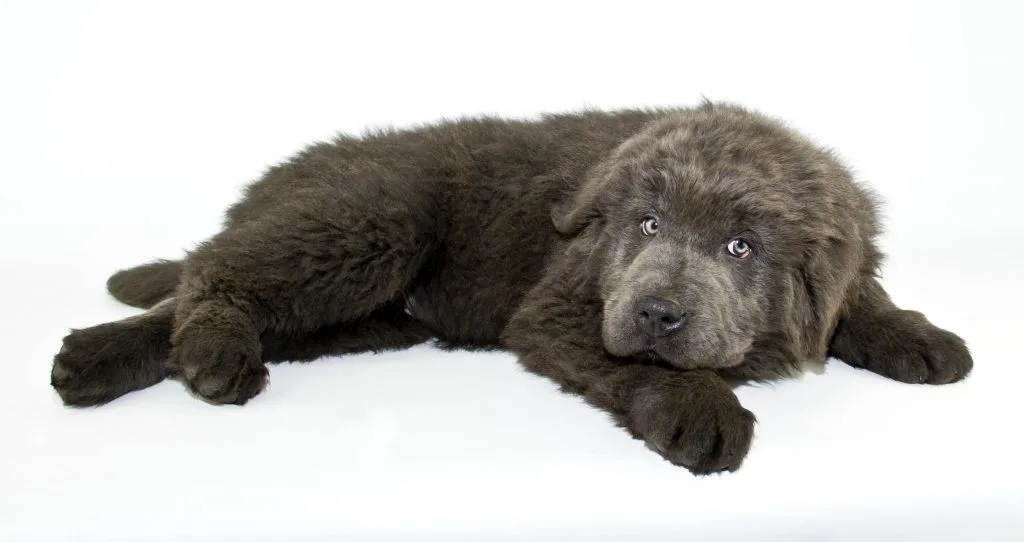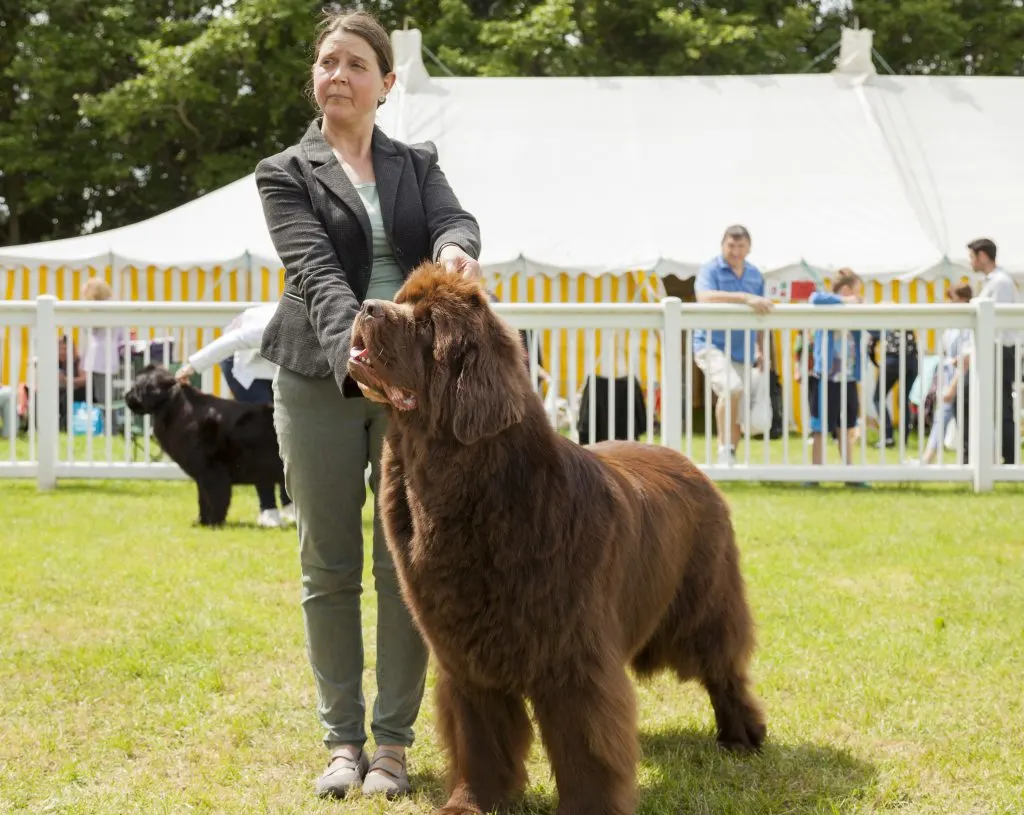
One of the most common conversations that I’ve had with people who met Sherman and Leroy for the first time was “I didn’t know they came in brown.”
That always started a little lesson in “Colors of the Newfoundland 101”
Of course most people we met thought that the only color a Newfoundland could be was black which is understandable because black is the most common color seen in this breed.
People were surprised that Newfies could be other colors than black and it was always a fun conversation.
Most of us that have Newfies of other colors get this all time and because of that, our Newfs are often mistaken for other breeds.
Let’s take a look at some of the colors of the Newfoundland breed and what is acceptable across the world.
When we say acceptable it means colors that are recognized by the Newfoundland Club of America and The American Kennel Club.
It doesn’t mean that Newfies of other colors are not Newfies, it means that those colors would not be able to compete in the conformation ring.
Why?
Because all dog breeds have to have a set of breed standards.
It’s kind of like a blueprint.
If you don’t have a blueprint to build a house you’re going to run into a lot of problems down the road.
You need a basic set of plans for all houses for them to be built properly and for chaos not to ensue.

Acceptable Newfoundland Dog Colors in the United States
According to the Newfoundland Club of America, recognized Newfoundland colors are black, brown, gray, and white and black.
Color is secondary to type, structure, and soundness and color should not play a roll in how much a Newfoundland dog costs.
Acceptable Newfoundland Dog Colors in Canada
According to the Candian Kennel Club, the recognized colors of Newfoundlands are black and white & black (Landseer)
The traditional and most common color is black.
White markings on the chest, toes and tip of the tail are allowed.
In the Landseer variety, the base color is white with black markings.
The preferred pattern is a black head, saddle, rump, and upper tail.
Acceptable Newfoundland Dog Colors in The U.K.
Black, brown, and Landseer-white with black markings only.
What about those brown and white Newfoundlands?
Those are still Newfoundlands they just aren’t a recognized color in any country.
They can still be registered and compete in working and obedience trials.
Why?

After years of research on this topic, I have no good, solid reason for this (and no one else does either)
There are plenty of opinions on the topic though.
Most reputable breeders won’t breed for a brown and white because it’s not considered an acceptable color within the standards.
Therefore, many backyard breeders or rescue groups are the only places where you will find this color.
(Sometimes you will find a reputable breeder that does have the occasional brown and white)
However, if it became an acceptable color I think many brown breeders would offer this color in the United States.
Just my opinion.
What About Beige Newfoundlands?
Also known as champagne or cream.
This is not an acceptable color in any country.
What About Blue Newfoundlands?
There is no such thing as a blue Newfoundland.

It’s a grey Newfoundland.
A breeder referring to a blue Newfoundland is up to no good.
White and Grey Newfoundland?
White and grey Newfoundlands do exist but are not acceptable.
Irish Spotted Newfoundlands
An Irish Spotted Newfoundland is a black Newfoundland with white markings.
These white markings are on the tips of the toes, chest, and tail.
Irish spotted is just a term used, not a color.
Does Color Affect Health?
The only Newfoundland dog color that has been proven to have health issues associated with it is grey and beige.
This is due to the dilute gene which can cause color dilution alopecia.
Color dilution alopecia “is a genetic recessive inherited condition that causes patches of hair thinning or loss, and may also include flaky and/or itchy skin.
The condition is associated with individuals who have what is called “dilute” color.”
Does Color Affect Personality?
Great question and there seems to be a lot of different opinions on this.
It seems to come down to the actual dog but many Newfie owners have said that Landseers are a bit more high-strung than other colors.

Odin is my second Landseer and I do think that they are a bit more active.
The Landseers that I’ve had seem to have a bit of a crazy side to them.
It’s like an on/off switch.
As far as browns go, Sherman was a laid back as they come but Leroy was goofier.
Share with us your findings!
Landseers Vs. Landseer ECT
Here’s where things get confusing.
In the U.S. and Canada, we refer to the white & black Newfoundland as a Landseer.
A Landseer in the United States and Canada is a white & black Newfoundland.

In Europe, a white & black Newfoundland is called a white & black Newfoundland.
Also in Europe, there is a breed of dog called the Landseer ECT (European Continental Type).
This looks similar to an American Landseer but it is not a Newfoundland.
This breed is taller and has a different personality.
If you live in the U.S. and have a tall Landseer, you most likely do NOT have an ECT Landseer you just have a tall Landseer.
There are only 1 or 2 breeders in the United States that breed ECT Landseers and they are not a recognized breed by the AKC.
“As of 1998, every country except the U.S. and Canada recognize the ECT as a separate breed from the Newfoundland.”
When discussing the colors of the Newfie it’s important to always remember that soundness and structure come first and to remember that different countries accept different colors.
Do you have a favorite color of the Newfie? Share it with us in the comment section below!
For more information about color genetics in Newfoundlands check out: Historical analysis of Newfoundland dog fur colour genetics

Dale
Tuesday 1st of June 2021
This is a very interesting and informative article.
We have rescued 4 Newfies (1 being a mix with chow and lab) over the last 15-20 years In southern California. They are hands down the sweetest most loving dogs on the planet. I just don't understand the snobbiness that comes with Newfie owners.
We currently have a brown and white and a black and white. Wether our dogs are considered Newfies, Landseers or Mutts, they are the most friendly and loyal family loving dogs on the planet. Gentle Giants indeed....
Cheers, Newfie lovers .
Koy Kincaid
Thursday 1st of October 2020
I have had Newfoundlands for thirty years. I currently own a brown and white female and a brown male. My brown and white is one of the sweetest dogs I have owned. She is healthy and has all of the best traits of her breed. I do not understand the ugly comments that are made about them based on color. I believe this breed to be the perfect compliment to a family and yet people who breed for pets are being called greedy and irresponsible by Newfoundland groups if there are brown and white puppies. There is no research that I can find that supports these dogs being a health risk. (I acknowledge that dilutes are a different matter.) I bought my first Newfoundland from a "reputable" breeder. I was thoroughly vetted and could have adopted a child with less fanfare. I paid an exorbitant amount to have the privilege of full registration, drove seven hours during an ice storm, was shown 27 sets of x-rays and assured that her dogs were tested and guaranteed. When my dog was diagnosed with dysplasia, the breeder would not return my calls. In some ways these elitist practices have encouraged puppy mills as they have priced families out of a wonderful companion dog through their diligent protection of the breed and in doing so created a market outside of recognized clubs and associations. The dichotomy is that they do not consider themselves greedy when they charge 3000 to 3500 for pups. Color should not be the issue, health and temperament should be. We should breed wisely, use the option of limited registration for family dogs, ask the appropriate questions regarding pet ownership, and be a resource for the people who buy our puppies. You cannot promote the breed if people do not have access to them. Just one woman's opinion.
NormanWilkes
Sunday 26th of April 2020
Your article brings me a lot of great information! Thank you!
Deborah
Wednesday 22nd of April 2020
So i found your great Newfie site. Have had 3 Newfs over 25 years. Recently lost my husband of 45 years and still have a 6 year old Newf which I will take care of forever. Recently sold the farm and moved to a gated community with lakes and forest walking trails. He has not been socialized with people(likes to hug them) and not dog socialized.. just need some advice.
Tails Around the Ranch
Wednesday 22nd of April 2020
Great info on potential coat color for us less than familiar with the breed or its standards.